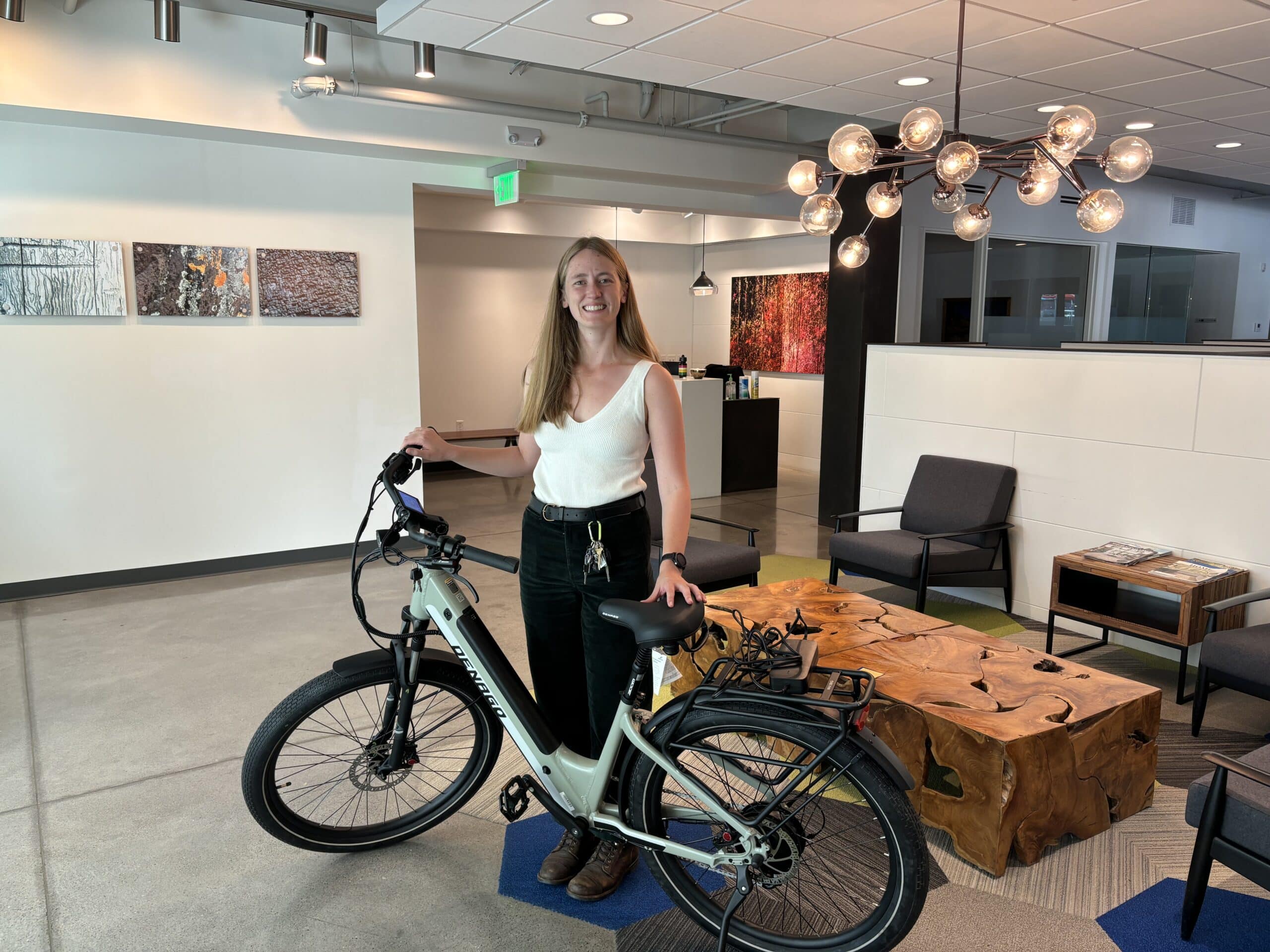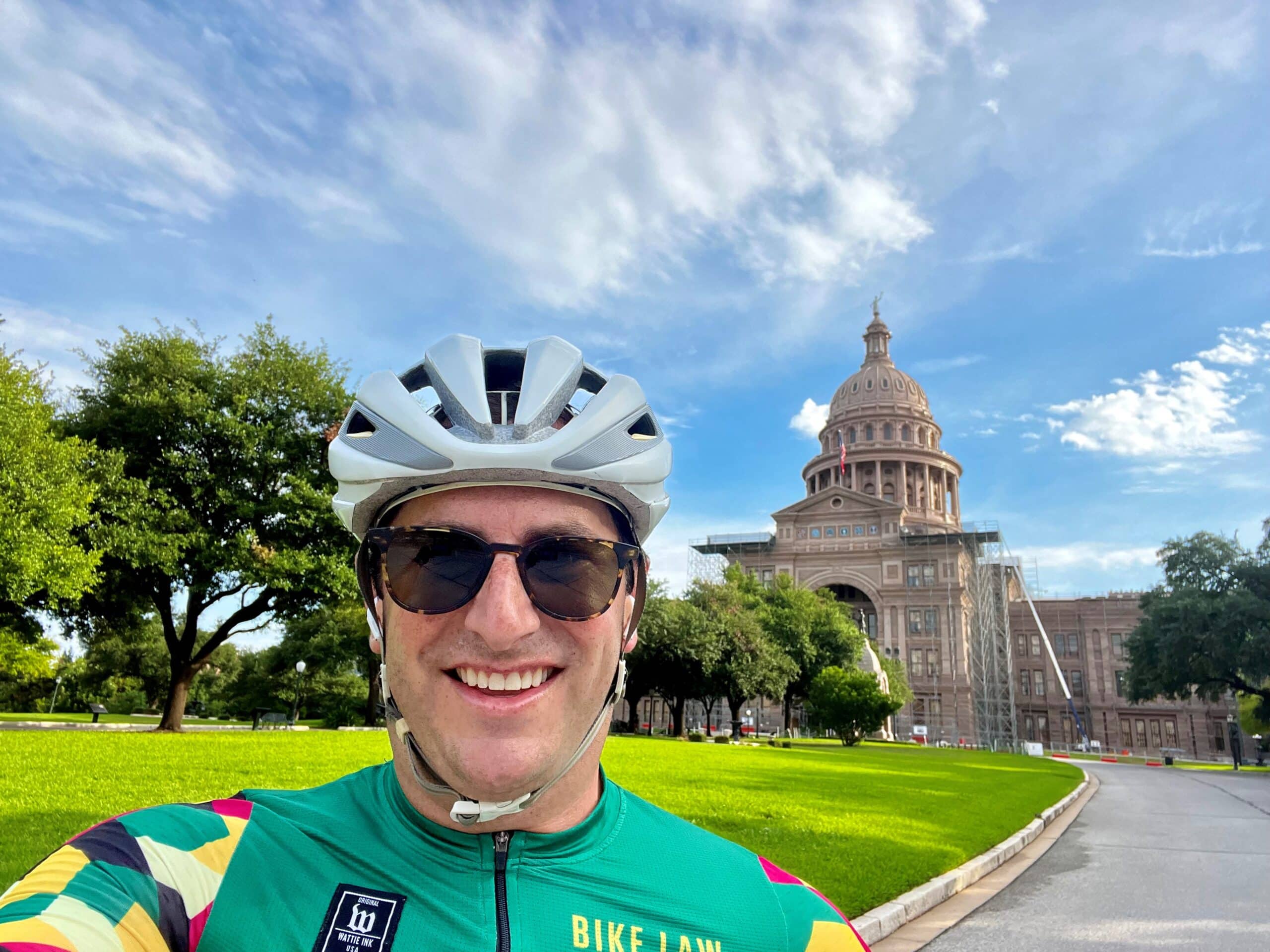Bicycle Accident Attorney Vance Preman explains the rights and duties of cyclists in Kansas.
As a bicycle accident attorney, cyclist and advocate, I prepared this as an overview of laws that might be beneficial to Kansas cyclists. It is not a complete review of the laws. For more information, please contact [email protected]. All statutory references are to Kansas Statutes Annotated (KSA)
DAMAGES
Kansas follows Modified Comparative Fault. 50% bar to recovery. KSA 60-258a(a) If you are 50% at fault – no recovery. Pain and suffering is capped at $250,000. A jury is not told of this. If verdict is higher than $250,000, the judge reduces it. Recovery can be made for economic loss as well (medical expenses lost wages, etc.).
SAFE PASSING LAW
8-1516 Pass to the left at a distance of not less than three (3) feet and do not drive to the right side of the roadway until the vehicle is safely clear of the overtaken bicycle.
8-1577 Opening and Closing Vehicle Doors. No person shall open the door of a motor vehicle on the side available to moving traffic unless and until it is reasonably safe to do so and can be done without interfering with the movement of other traffic nor shall any person leave a door open on the side of a vehicle available to moving traffic for a period of time longer than necessary to load or unload
BICYCLING WHILE INTOXICATED
8-1567 Enunciates that a person shall not operate a “vehicle” under the influence.
8-1485 A bicycle is not a “vehicle” since it is propelled by human power. However, a city can pass an ordinance regarding bicycling while intoxicated.
DISTRACTED DRIVING
8-15111 No person operating a motor vehicle on a public road or highway while using a wireless communication device to write, send, or read a written communication. (2013 law)No cell phone use for novice drivers (learners or intermediate license)
8-1592. Lamps, brakes and other equipment on bicycles. (Light/lamp visibility specifications)
Every bicycle when in use at nighttime shall be equipped with a lamp on the front which shalt emit a white light visible from a distance of at least five hundred (500) feet to the front and with a red reflector on the rear of a type approved by the Secretary of Transportation which shall be visible from all distances from one hundred (100) feet to six hundred (600) feet to the rear when directly in front of lawful lower beams of head lamps on a motor vehicle. A lamp emitting a red light visible from a distance of five hundred (500) feet to the rear may be used in addition to the red reflector.
Every bicycle shall be equipped with a brake which will enable the operator to make the braked wheels skid on dry, level, clean pavement.
No person shall sell a pedal for use on a bicycle, unless such pedal Is equipped with a reflector of a type approved by the Secretary of Transportation which is visible from the front and rear of the bicycle to which it is attached during darkness from a distance of two hundred (200) feet, and no person shall sell a new bicycle, unless it Is equipped with pedals meeting the requirements of this subsection.
RIGHTS AND DUTES
1587. Traffic laws apply to persons riding bicycles. (All traffic laws apply to bicyclists.)
Every person riding a bicycle upon a roadway shall be granted all of the rights and shall be subject to all of the duties applicable to the driver of a vehicle by this act, except as otherwise provided In K.S.A. B-1586 to 8-1592, Inclusive, and except as to those provisions of this act which by their nature can have no application.
WHERE TO RIDE
8-1590. Riding on bicycles or mopeds; riding on roadways and bicycle paths.
Every person operating a bicycle or a moped upon a roadway at less than the normal speed of traffic at the time and place and under the conditions then existing shall ride as near to the right side of the roadway as practicable, except under any of the following situations when: (1) Overtaking and passing another bicycle or vehicle proceeding In the same direction; (2) preparing for a left turn at an intersection or into a private road or driveway; or (3) reasonably necessary to avoid conditions including, but not limited to, fixed or moving objects, parked or moving bicycles, bicycles, pedestrians, animals, surface hazards or narrow width lanes that make it unsafe to continue along the right-hand edge of the roadway.
Any person operating a bicycle or a moped upon a one-way highway with two or more marked traffic lanes may ride as near to the left side of the roadway as practicable.
Persons riding bicycles upon a roadway shall not ride more than two abreast, except on paths or parts of roadways set aside for the exclusive use of bicycles.
Wherever a usable path for bicycles has been provided adjacent to a roadway, bicycle riders shall use such path and shall not use the roadway.
A “narrow width lane” means a lane that is too narrow for a bicycle and a vehicle to travel safely side-by-side within the lane.







